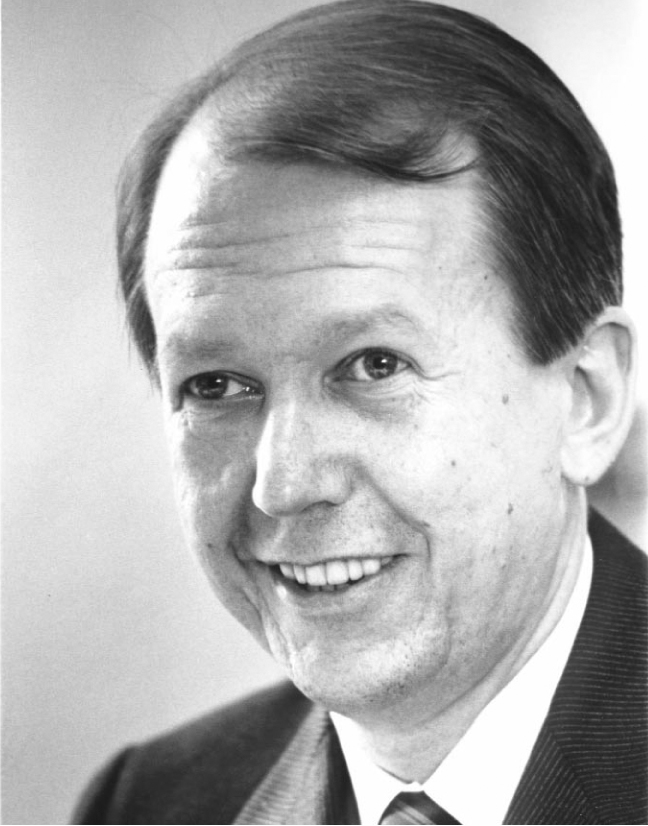Arthur Falnes Davidsen
DOI: 10.1063/1.1485599
Arthur Falnes Davidsen, a leader in the study of the intergalactic medium, founding director of the Center for Astrophysical Sciences at Johns Hopkins University, and a key player in bringing the Space Telescope Science Institute to the Johns Hopkins campus, died in Baltimore, Maryland, on 19 July 2001 from complications related to a lung disorder.
Davidsen was born on 26 May 1944 in Freeport, New York, to parents of Norwegian descent. He attended Princeton University, receiving his AB in physics in 1966. Although accepted into the University of California, Berkeley, for graduate school, he first served five years as a naval officer, initially on a destroyer and then at the Naval Research Laboratory in Washington, DC, where, through his association with Herbert Friedman, he was introduced to x-ray astronomy. Davidsen earned his MA in astronomy from Berkeley in 1972. He continued to work in x-ray astronomy with Stuart Bowyer at Berkeley and earned his PhD in astronomy in 1975. Davidsen’s thesis was entitled “Optical Observations of Compact X-ray Sources.”
In 1975, he joined Johns Hopkins as an assistant professor of physics and became a professor of physics in 1980. In 1977, Davidsen, together with William Fastie and George Hartig, successfully conducted a sounding rocket campaign to obtain the far ultraviolet spectrum of the quasar 3C 273. The absence of prominent absorption shortward of the Lyman-alpha feature in the quasar’s spectrum demonstrated clearly for the first time that the local universe was devoid of cool intergalactic gas.
In 1978, under NASA’s Spacelab program, Davidsen proposed to build and fly a meter-class far ultraviolet telescope and spectrograph on the space shuttle. His proposal was accepted in 1979, well before the space shuttle first flew, and the Hopkins Ultraviolet Telescope (HUT) became the major effort in Davidsen’s career for the better part of the next two decades. Although suffering a number of setbacks, including a four-year delay arising from the Challenger accident in 1986, the payload ultimately flew two successful missions, Astro-1 in December 1990 and Astro-2 in March 1995. During the March mission, Davidsen was able to realize his initial goal of using HUT to make a definitive measurement of the intergalactic medium using a high-redshift quasar as a background source. By carefully analyzing the resulting spectrum, Davidsen and colleagues were able to detect and measure a long-sought hotter component of the intergalactic medium.
Davidsen played a leading role in developing, in 1979, the joint Association of Universities for Research in Astronomy-Johns Hopkins proposal that led to the siting of the Space Telescope Science Institute on the Johns Hopkins campus. This event led to an expansion of astrophysics in the physics department and an overall growth in what is now known as the department of physics and astronomy.
Davidsen’s leadership in the astrophysics community was evident in his dedicated work on many panels, boards, and committees. He served as interim dean of the Krieger School of Arts and Sciences at Johns Hopkins in 1997 and, at the time of his death, was serving a term as chair of the Sloan Digital Sky Survey project’s advisory council. In addition to being the principal investigator of HUT, he was a coinvestigator on the Hubble Space Telescope Faint Object Spectrograph team and many other instrumentation projects. In 1979, the American Astronomical Society awarded Davidsen the Helen B. Warner Prize.
Davidsen’s coworkers will remember his consummate gentlemanly manner. Rarely seen in jeans or heard to raise his voice, he had an unselfish concern for students and more junior colleagues. Yet a contrasting side of him was rarely evident to scientific colleagues: He was a talented, albeit amateur, rock musician and rode a Harley-Davidson motorcycle for relaxation. Far too prematurely, the astrophysics community has lost a great colleague and friend.

Arthur Falnes Davidsen

More about the Authors
Paul D. Feldman. Johns Hopkins University, Baltimore, Maryland, US.
William P. Blair. Johns Hopkins University, Baltimore, Maryland, US.
Bruce Margon. Space Telescope Science Institute, Baltimore, Maryland, US.
